 |
 |
 |
| |
Saroglitazar Lowers ALT and Triglycerides, Reducing Liver Stiffness in MASH
|
| |
| |
AASLD 2023 nov 10-14
listen to live session
https://www.aasld.org/the-liver-meeting
AASLD 2023, The Liver Meeting, November 10-14, 2023, Boston
Mark Mascolini
Saroglitazar, a dual PPAR-α and -γ agonist licensed for diabetic dyslipidemia, lowered ALT liver enzymes and triglycerides in a 24-week study of people with metabolic dysfunction-associated steatohepatitis (MASH) [1]. Saroglitazar also lowered liver stiffness measure (LSM) by transient elastography. But these benefits did not add up to improved liver histology in these people, reported Tarana Gupta of the Pandit Bhagwat Dayal Sharma Post Graduate Institute of Medical Sciences in Rohtak, India.
MASH and metabolic dysfunction-associated steatotic liver disease (MASLD) both feature triglyceride pile-ups, lipotoxicity, and inflammation, which together drive liver fibrosis over the long term. Peroxisome proliferator-activated receptors (PPARs) are transcription factors with three subtypes-PPAR-α (which lowers triglycerides and helps regulate energy homeostasis), PPAR-γ (which promotes insulin sensitization and enhances glucose metabolism), and PPAR- β/σ (which enhances fatty acid metabolism) [2]. As a PPAR-α and -γ agonist, saroglitazar should prompt these beneficial physiologic responses. Mice stripped of PPAR become susceptible to MASH. An earlier 106-person double-blind placebo-controlled trial found that 4 mg of saroglitazar daily for 16 weeks improved ALT, liver fat content, insulin resistance, and atherogenic dyslipidemia in people with MASLD/MASH [3].
Current MASH therapeutic options-vitamin E, pioglitazone, GLP-1RA medications, tirzepatide, and SGLT2 inhibitors-all improve steatosis, but only vitamin E has an indication for MASH, and none of them clearly eases liver fibrosis. Saroglitazar improves lipid profiles in people with diabetic dyslipidemia, but studies of its use in people with MASH have yielded limited and mixed results, according to Gupta and colleagues.
The new study was a randomized, open-label trial held in a tertiary care center in Rohtak, India. To be included in the trial, people had to have steatotic liver disease and an ALT more than 2 times the upper limit or normal, alcohol intake below 20 g daily for males and below 10 g daily for females. Participants could have any cardiometabolic risk factor.
The trial enrollee pool included anyone with fatty liver who had blood testing and liver biopsy. People with at least 1 metabolic factor, ALT more than 2 times the upper limit of normal, and a NAFLD activity score (NAS) above 4 were diagnosed with MASH and randomized to group 1 (saroglitazar at 4 mg once daily for 24 weeks) or group 2 (saroglitazar at 4 mg once daily plus vitamin E at 400 IU once daily for 24 weeks). Participants had liver function tests every 3 months. Nineteen people in group 1 and 17 in group 2 had a follow-up liver biopsy after treatment. Primary end points were change in LSM, change in ALT, and improvement in NAS grade. All 25 participants in each group were included in the final analysis. (NAS can range from 0 to 8 and represents the sum of scores of steatosis (0-3), lobular inflammation (0-3) and hepatocyte ballooning (1-2)).
Average age was similar in groups 1 and 2 (42.5 and 41.0), as were the proportion of females (64% and 60%), median body mass index (28.54 and 28.50 kg/m2), and proportion with diabetes (36% and 40%). ALT, triglycerides, and total cholesterol were similar in the two groups, low-density lipoprotein (LDL) cholesterol was higher in group 1 (113.8 vs 103.4 mg/dL, P < 0.001), and LSM was marginally higher in group 1 (average 9.14 vs 7.95, P = 0.08).
Through 24 weeks average LSM fell significantly in both groups, from 9.1 to 7.0 in group 1 (P = 0.03) and from 7.9 to 7.1 in group 2 (P = 0.04). ALT also dropped significantly in group 1 (101 to 81 U/L, P = 0.02) and group 2 (98 to 75 U/L, P = 0.04). NAS score fell in both groups, though the declines stopped short of statistical significance (5.6 to 3.2 in group 1, P = 0.09; 5.7 to 3.2 in group 2, P = 0.07). Relative drop in LSM was slightly greater in group 1 than group 2 (-23% vs -19%, P = 0.06), while relative decline in ALT was modestly smaller in group 1 than group 2 (-21% vs -24%, P = 0.09). Relative NAS declines were small and similar in the two groups (-2% in group 1 and -3% in group 2, P = 0.73).
Among secondary endpoints, triglycerides fell significantly from baseline to week 24 in group 1 (223 to 167 mg/dL, P < 0.01) and nonsignificantly in group 2 (234 to 185 mg/dL, P = 0.1). Total cholesterol drops were significant in both groups (209 to 199 mg/dL in group 1, P = 0.007; 234 to 199 mg/dL in group 2, P < 0.05). Body mass index fell slightly and nonsignificantly in both groups. Relative change in triglycerides over 24 weeks was significantly greater in group 1 than 2 (-29% vs -10%, P = 0.04), while the difference in cholesterol drops fell short of statistical significance (-19% vs -10%, P = 0.07). Body mass index fell about 5% in both groups.
The researchers reported no adverse events in either treatment arm.
They proposed that "by reducing ALT and serum triglyceride levels" with saroglitazar, people with "MASH also showed reduction in LSM values." But these gains did not translate into improved liver histology, as indicated by flat NAS scores through 24 weeks. But they argued that 24 weeks are a short time in which to document histologic changes. Adding vitamin E to saroglitazar had no discernible impact. The researchers acknowledged the small number of participants in each study arm, and added that only about 70% of participants had a follow-up liver biopsy.
AASLD 2023 nov 10-14
https://www.aasld.org/the-liver-meeting
References
1. Gupta T, Kaushik P, Mittal R, et al. Saroglitazar is effective in improving liver stiffness measurement and liver enzymes in nonalcoholic steatohepatitis. AASLD 2023, The Liver Meeting, November 10-14, 2023, Boston.
2. Tyagi S, Gupta P, Saini AS, Kaushal C, Sharma S. The peroxisome proliferator-activated receptor: a family of nuclear receptors role in various diseases. J Adv Pharm Technol Res. 2011;2: 236-240. doi: 10.4103/2231-4040.90879. https://www.ncbi.nlm.nih.gov/pmc/articles/PMC3255347/
3. Gawrieh S, Noureddin M, Loo N, Mohseni R, et al. Saroglitazar, a PPAR-α/γ agonist, for treatment of NAFLD: a randomized controlled double-blind phase 2 trial. Hepatology. 2021;74:1809-1824. doi: 10.1002/hep.31843. https://journals.lww.com/hep/abstract/2021/10000/saroglitazar,_a_ppar_____agonist,_for_treatment_of.9.aspx
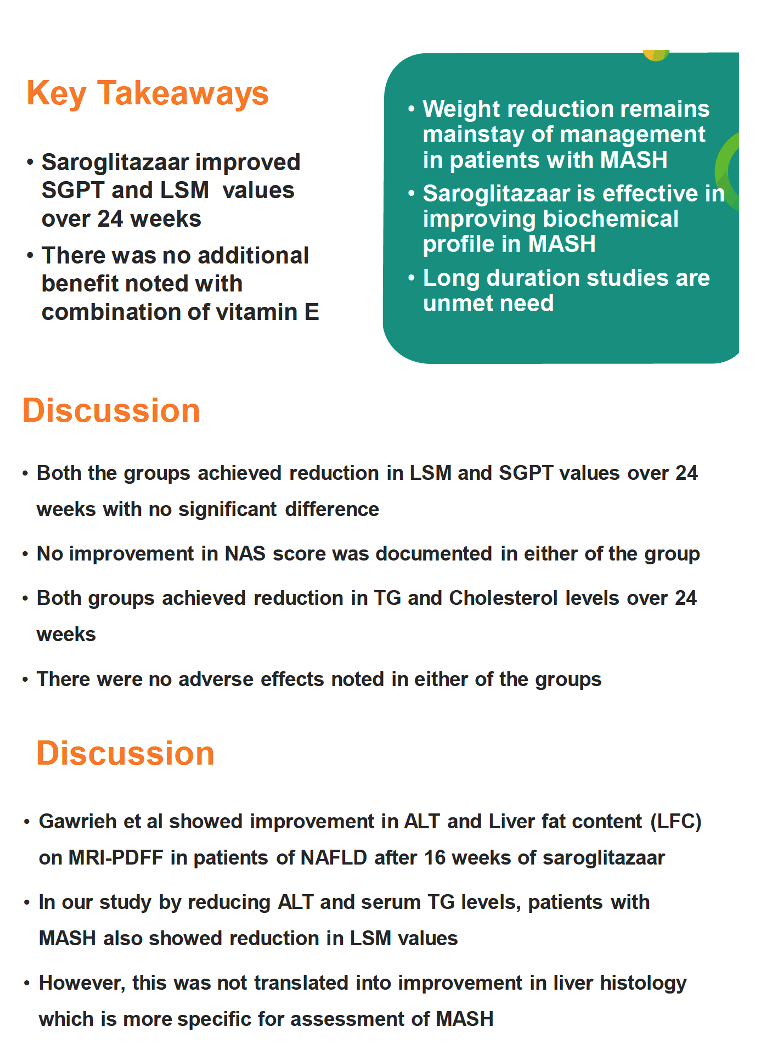
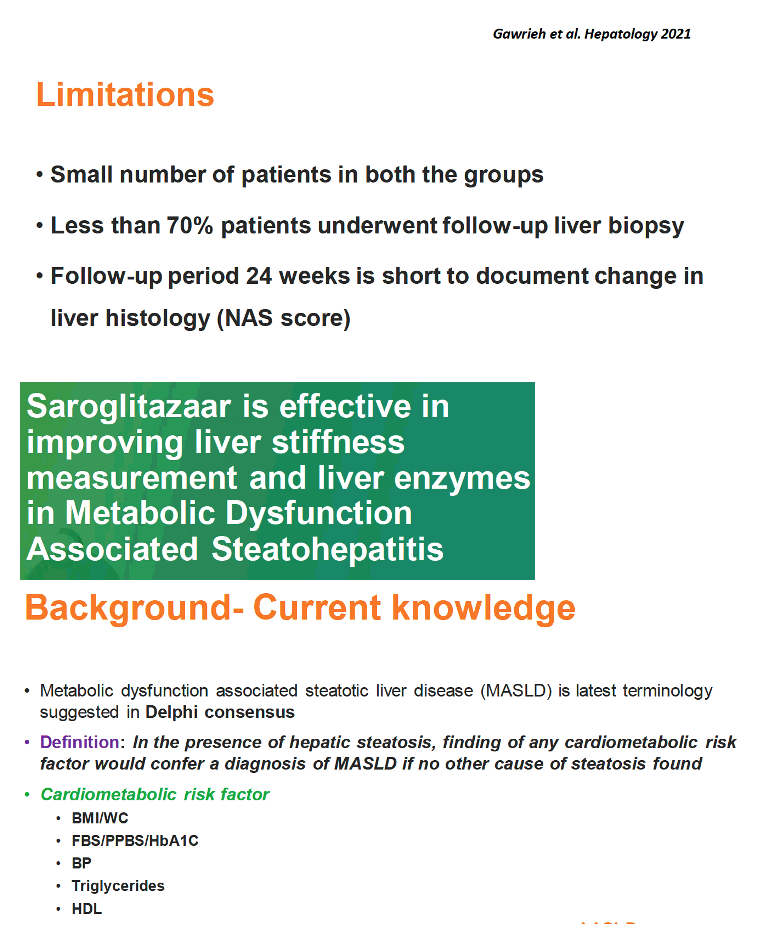
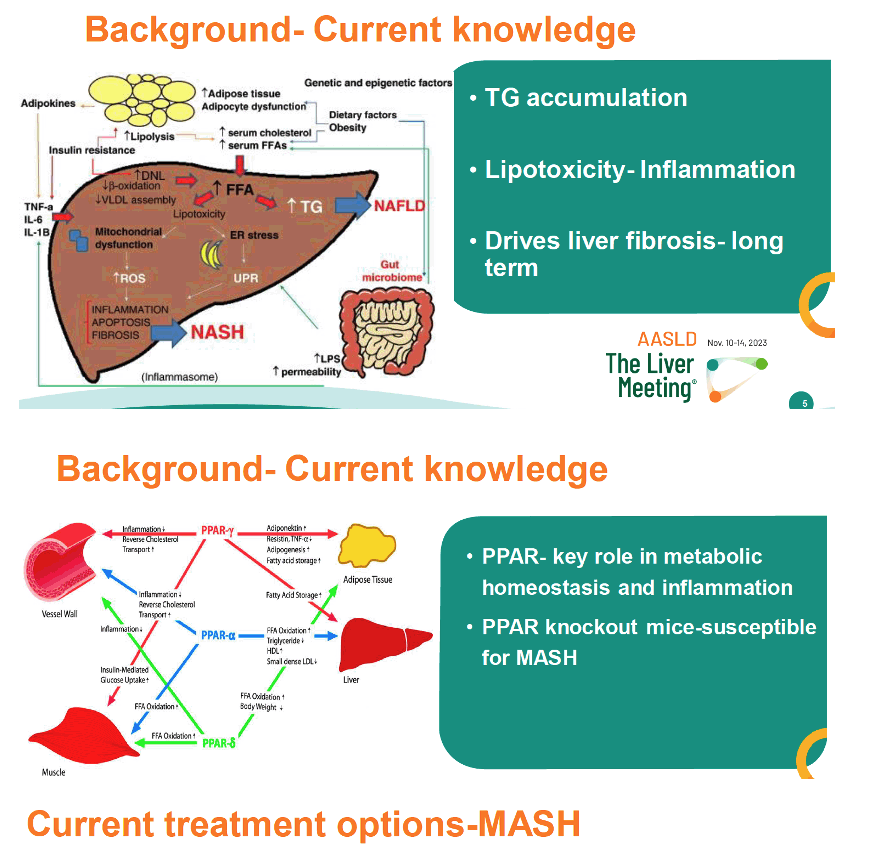
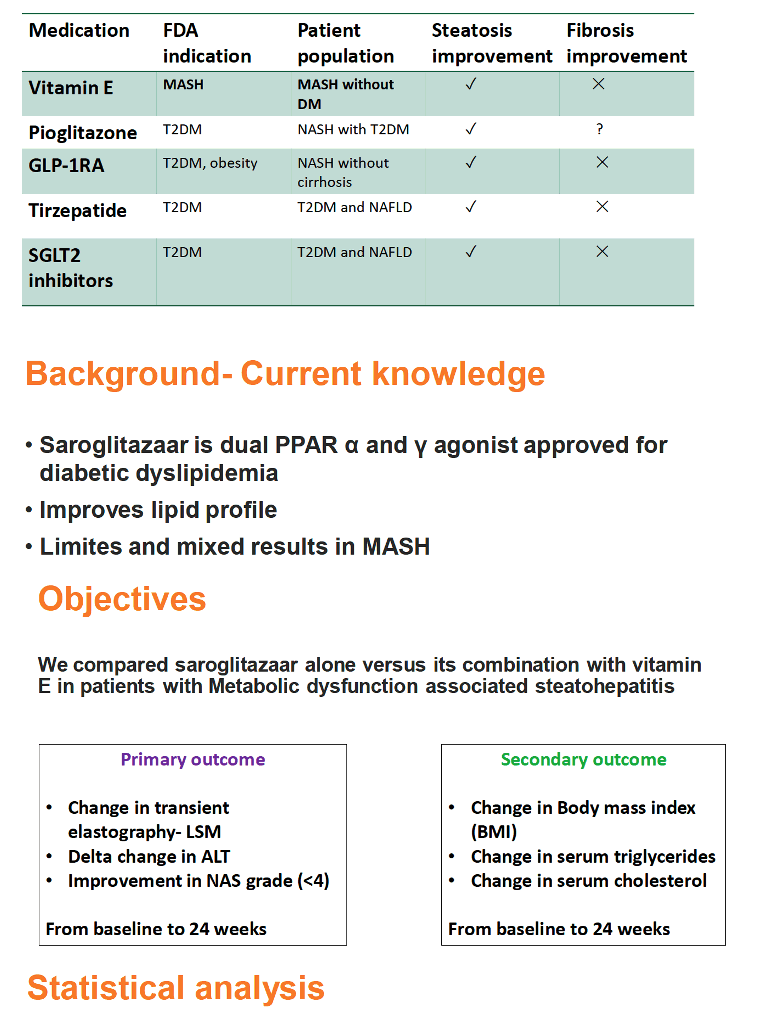
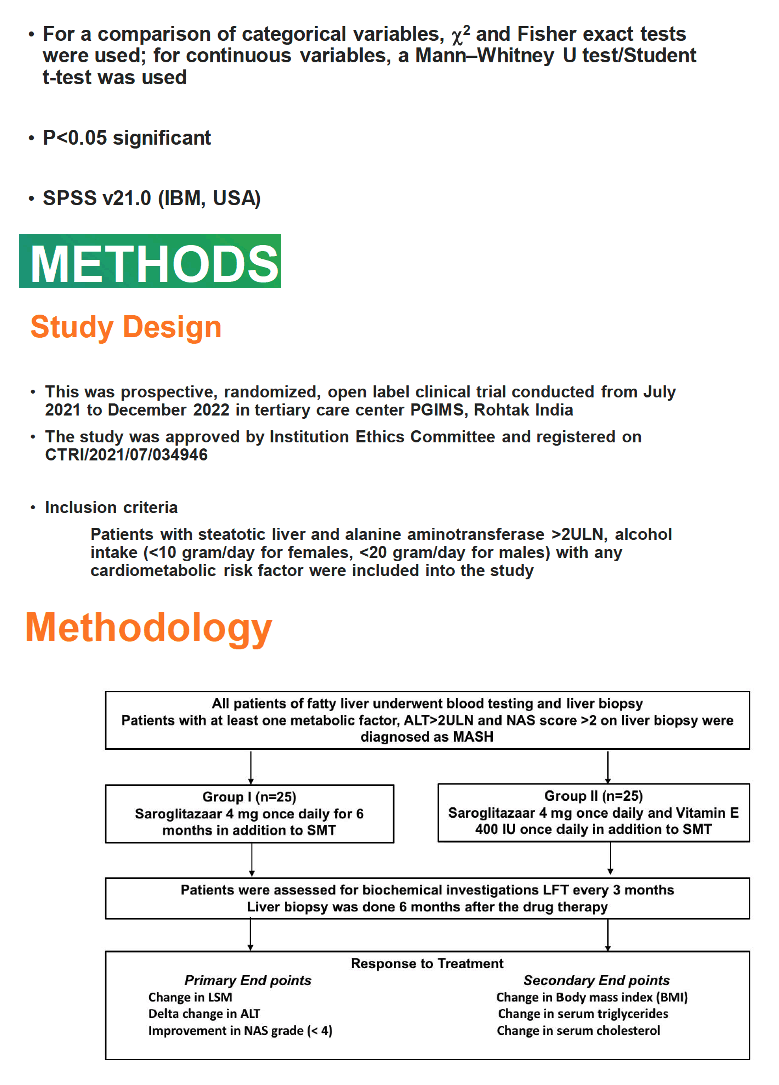
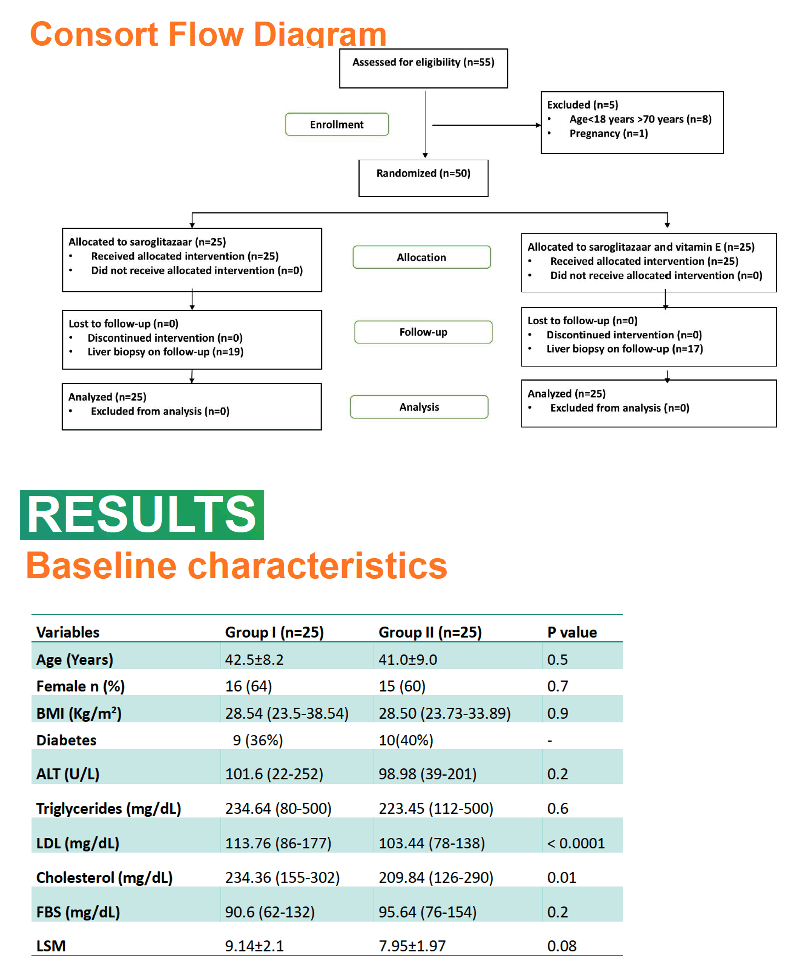
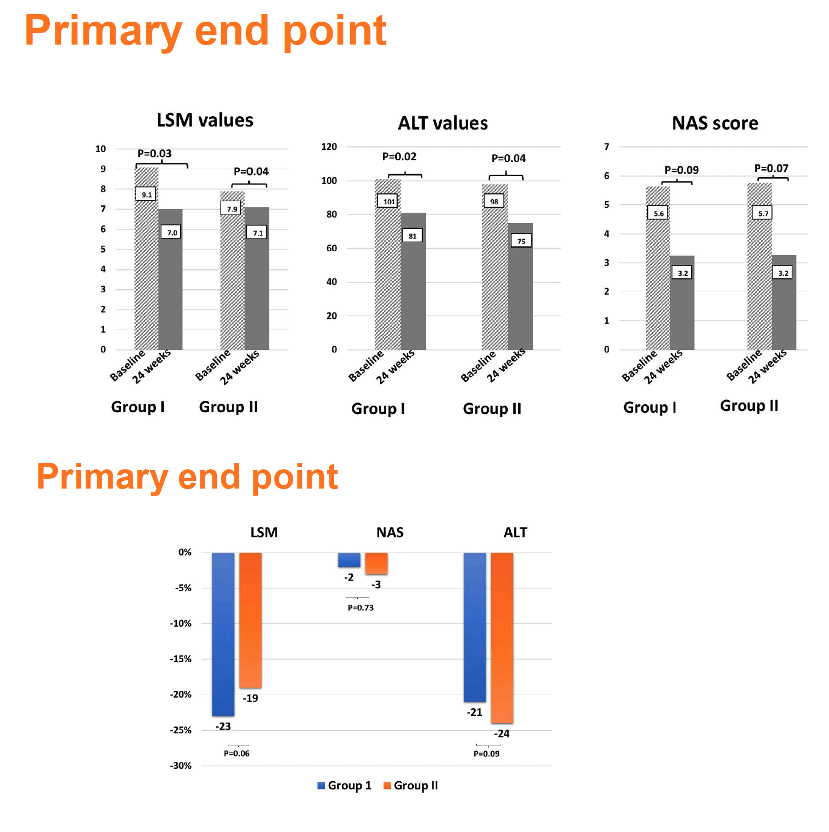
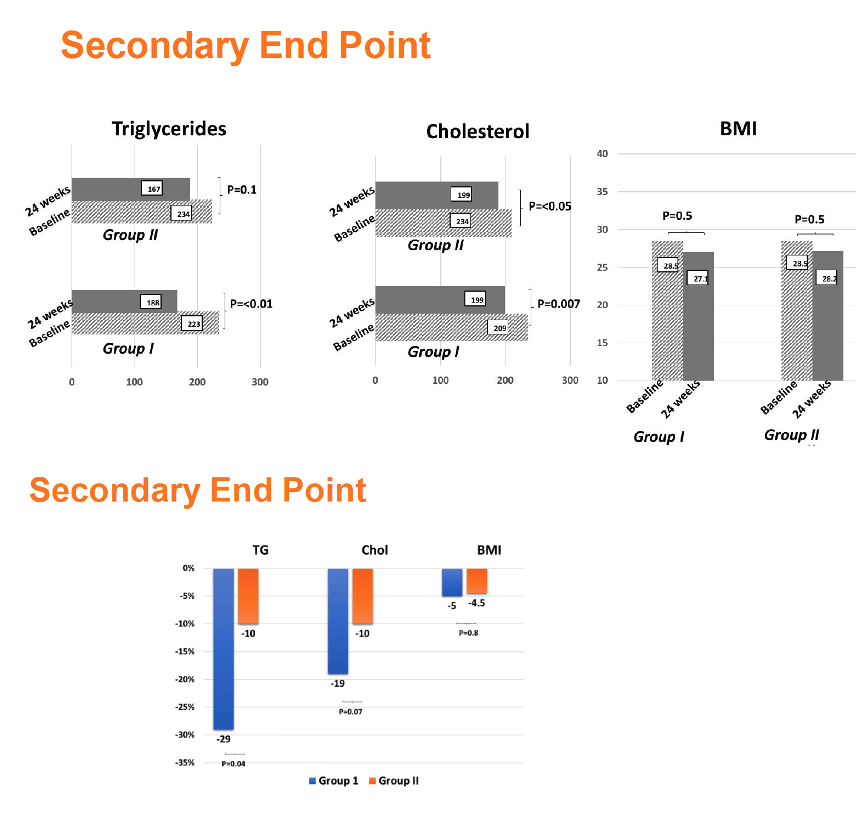

|
| |
|
 |
 |
|
|